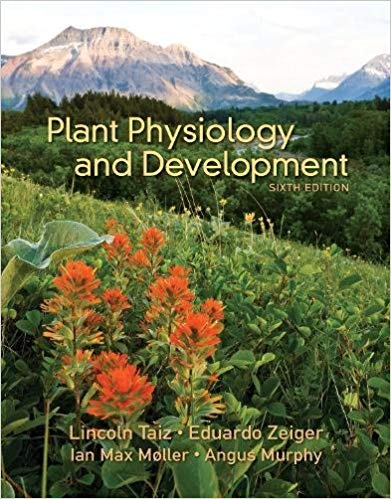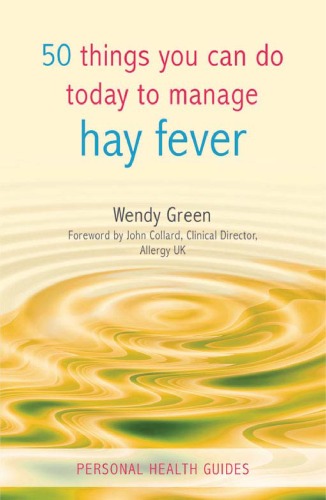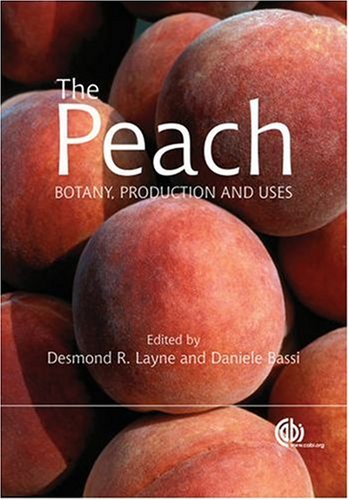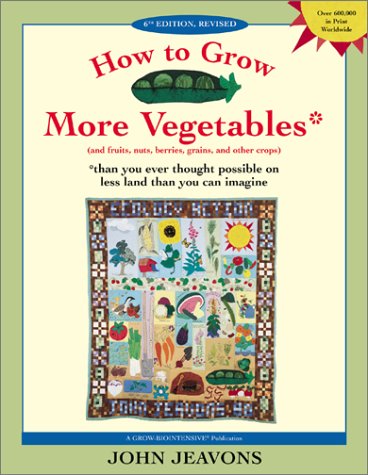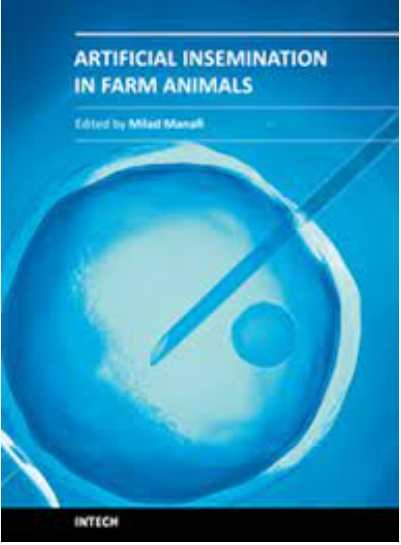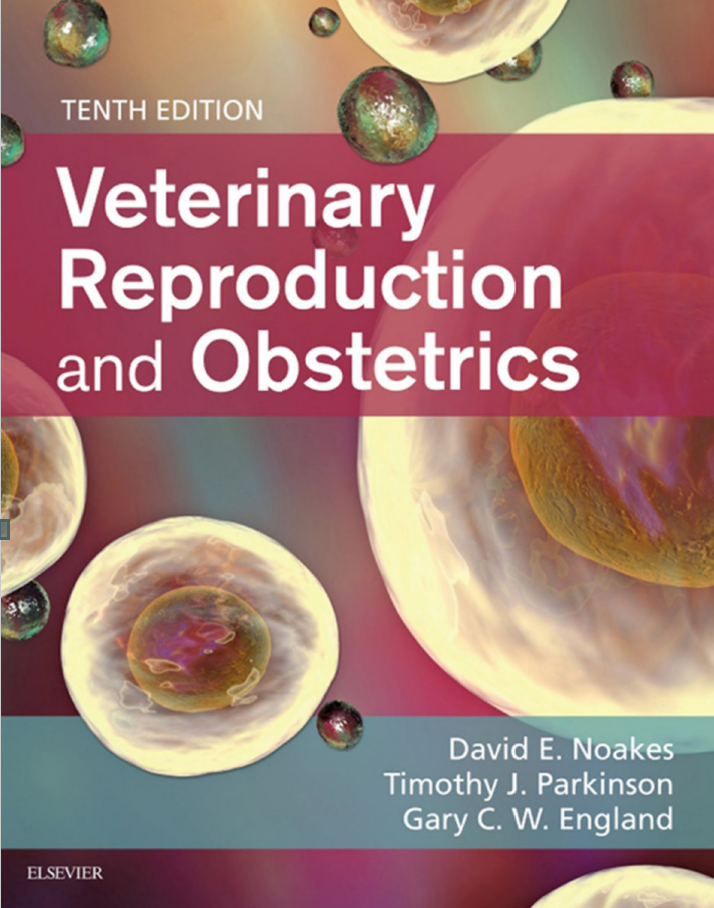Throughout its twenty-two year history, the authors of Plant Physiology have continually updated the book to incorporate the latest advances in plant biology and implement pedagogical improvements requested by adopters. This has made Plant Physiology the most authoritative, comprehensive, and widely used upper-division plant biology textbook. In the Sixth Edition, the Growth and Development section (Unit III) has been reorganized and expanded to present the complete life cycle of seed plants from germination to senescence. In recognition of this enhancement, the text has been renamed Plant Physiology and Development. As before, Unit III begins with updated chapters on Cell Walls and Signals and Signal Transduction. The latter chapter has been expanded to include a discussion of major signaling molecules, such as calcium ions and plant hormones. A new, unified chapter entitled Signals from Sunlight has replaced the two Fifth-Edition chapters on Phytochrome and Blue Light Responses. This chapter includes phytochrome, as well as the blue and UV light receptors and their signaling pathways, including phototropins, cryptochromes, and UVR8. The subsequent chapters in Unit III are devoted to describing the stages of development from embryogenesis to senescence and the many physiological and environmental factors that regulate them. The result provides students with an improved understanding of the integration of hormones and other signaling agents in developmental regulation.
The new organization of Unit III has the added benefit that it minimizes redundancy, making it possible to reduce the number of chapters in the Unit from 13 to 11. Angus Murphy of the University of Maryland has headed up a team of authors and editors to implement the revision. Ian Max Møller has subsequently edited all the book chapters to ensure an even high quality and consistency level.
In addition to the organizational changes noted above, two new chapters on stress are included:
*A new chapter titled Biotic Interactions--replacing the Fifth-Edition Chapter 13 on Secondary Metabolites and Plant Defense--discusses the integrated signaling responses to a spectrum of biological agents.
*A completely rewritten chapter on Abiotic Stress discusses the use of genomics, systems biology, imaging, and bioinformatics tools in the study of abiotic stress. Recent efforts to develop drought-tolerant maize and flood-tolerant rice are described, as well as the role of ABA receptors, newly-identified regulatory networks, epigenetic changes in response to abiotic stress, and rapid systemic signaling.
The Sixth Edition of Plant Physiology and Development also includes updated and improved versions of the physiological chapters in Units I and II. A new chapter on Stomatal Biology has been added to Unit II. The chapters on Mineral Nutrition and Assimilation of Inorganic Nutrients feature a new treatment of nitrogen metabolism:
*Ammonium and nitrate are often lumped together as inorganic nitrogen although their influences on plants are quite different, almost like two different elements. These two forms of nitrogen are therefore treated separately in the Sixth Edition.
*The pathway of all nutrients essential in the human diet begins with plant roots "mining" the soil for mineral elements; the Sixth Edition explicitly examines the linkage between plant nutrition and human health.
*The response of plants to rising atmospheric levels of carbon dioxide depends most strongly on their nitrogen status. The Sixth Edition describes the newly discovered mechanism for this dependence and how it will influence food quality in the future.
*Exciting new findings on the mechanisms of mycorrhizal associations and symbiotic nitrogen fixation will be added, providing insights about the interdependence of plants and microorganisms.
The goal, as always, is to provide the best educational foundation possible for the next generation of plant biologists.
RESOURCES
For the Student
COMPANION WEBSITE
The Plant Physiology and Development Companion Website (available free of charge) includes a rich collection of material that enhances the textbook's coverage on a wide range of topics. Web Topics and Web Essays are referenced throughout the textbook. The site includes the following resources for each chapter of the textbook:
*Web Topics: Text, boxes, and illustrations elaborating on selected topics
*Web Essays: Discussions of cutting-edge research topics, written by those who do the research
*Study Questions
*Literature Cited
For the Instructor
INSTRUCTOR'S RESOURCE LIBRARY
The Plant Physiology and Development Instructor's Resource Library includes all of the textbook's figures (both art and photographs) and tables in electronic format. All images are provided in both JPEG (high- and low-resolution versions) and ready-to-use PowerPoint presentations. The figures have all been formatted and color-enhanced for optimal projection in the classroom.
چکیده فارسی
در طول تاریخ بیست و دو سالهاش، نویسندگان فیزیولوژی گیاهی بهطور مداوم این کتاب را بهروزرسانی کردهاند تا آخرین پیشرفتها در زیستشناسی گیاهی را در خود جای داده و پیشرفتهای آموزشی را که توسط پذیرندگان درخواست شده است، اجرا کنند. این موضوع فیزیولوژی گیاهی را به معتبرترین، جامع ترین و پرکاربردترین کتاب درسی زیست شناسی گیاهان در بخش بالایی تبدیل کرده است. در ویرایش ششم، بخش رشد و توسعه (واحد III) برای ارائه چرخه زندگی کامل گیاهان بذر از جوانه زنی تا پیری سازماندهی مجدد و گسترش یافته است. برای تشخیص این پیشرفت، متن به فیزیولوژی و توسعه گیاهی تغییر نام داد. مانند قبل، واحد III با فصلهای بهروز شده در مورد دیوارهای سلولیو سیگنالها و انتقال سیگنال آغاز میشود. فصل اخیر گسترش یافته است تا شامل بحثی در مورد مولکول های سیگنال دهنده اصلی، مانند یون های کلسیم و هورمون های گیاهی باشد. یک فصل جدید و یکپارچه با عنوان سیگنال های نور خورشید جایگزین دو فصل نسخه پنجم در Phytochrome و Blue Light Responses شده است. این فصل شامل فیتوکروم و همچنین گیرنده های نور آبی و UV و مسیرهای سیگنال دهی آنها از جمله فتوتروپین ها، کریپتوکروم ها و UVR8 است. فصل های بعدی در بخش III به شرح مراحل رشد از جنین زایی تا پیری و بسیاری از عوامل فیزیولوژیکی و محیطی که آنها را تنظیم می کنند اختصاص دارد. نتیجه به دانش آموزان درک بهتری از ادغام هورمون ها و سایر عوامل سیگنال دهی در تنظیم رشد ارائه می دهد.
سازمان جدید واحد III دارای مزیت اضافهای است که افزونگی را به حداقل میرساند و کاهش تعداد فصلهای واحد را از 13 به 11 ممکن میسازد.انگوس مورفی از دانشگاه مریلند یک تیمی از نویسندگان و ویراستاران برای اجرای بازبینی. یان مکس مولر متعاقباً تمام فصلهای کتاب را ویرایش کرده است تا از کیفیت و سطح یکنواختی یکنواخت اطمینان حاصل کند.
علاوه بر تغییرات سازمانی ذکر شده در بالا، دو فصل جدید در مورد استرس گنجانده شده است:
*فصل جدیدی با عنوان تداخلات بیوتیک-- جایگزین فصل 13 ویرایش پنجم در متابولیت های ثانویه و دفاع گیاهی-- پاسخ های سیگنالینگ یکپارچه به طیفی از عوامل بیولوژیکی را مورد بحث قرار می دهد.
*یک فصل کاملاً بازنویسی شده در مورد استرس غیر زنده استفاده از ابزارهای ژنومیک، زیست شناسی سیستمی، تصویربرداری و بیوانفورماتیک را در مطالعه استرس غیر زنده مورد بحث قرار می دهد. تلاشهای اخیر برای توسعه ذرت مقاوم به خشکی و برنج مقاوم در برابر سیل، و همچنین نقش گیرندههای ABA، شبکههای تنظیمی جدید شناسایی شده، تغییرات اپی ژنتیکی در پاسخ به استرس غیرزیستی، و سیگنالدهی سریع سیستمیک شرح داده شده است.
ویرایش ششم فیزیولوژی و رشد گیاهانهمچنین شامل نسخه های به روز و بهبود یافته فصل های فیزیولوژیک در واحدهای I و II است. فصل جدید زیست شناسی روزنهبه واحد دوم اضافه شد. فصلهای تغذیه معدنی و جذب مواد مغذی معدنی درمان جدیدی برای متابولیسم نیتروژن ارائه میکنند:
*آمونیم و نیترات اغلب به عنوان نیتروژن معدنی با هم ترکیب می شوند، اگرچه تأثیر آنها بر گیاهان کاملاً متفاوت است، تقریباً مانند دو عنصر مختلف. بنابراین این دو شکل نیتروژن به طور جداگانه در ویرایش ششم مورد بررسی قرار می گیرند.
*مسیر تمام مواد مغذی ضروری در رژیم غذایی انسان با استخراج عناصر معدنی از خاک توسط ریشه های گیاه آغاز می شود. ویرایش ششم به صراحت ارتباط بین تغذیه گیاهی و سلامت انسان را بررسی می کند.
*پاسخ گیاهان به افزایش سطح دی اکسید کربن در اتمسفر به شدت به وضعیت نیتروژن آنها بستگی دارد. ویرایش ششم مکانیسم جدید کشف شده برای این وابستگی و چگونگی تأثیر آن بر کیفیت غذا در آینده را توضیح می دهد.
*یافتههای جدید هیجانانگیز در مورد مکانیسمهای تداعی میکوریزا و تثبیت نیتروژن همزیست اضافه خواهد شد که بینشی در مورد وابستگی متقابل گیاهان و میکروارگانیسمها ارائه میکند.
هدف، مانند همیشه، ارائه بهترین پایه آموزشی ممکن برای نسل بعدی زیست شناسان گیاهی است.
منابع
برای دانش آموز
وب سایت همراه
وبسایت همراه فیزیولوژی و توسعه گیاهی (رایگان در دسترس است) شامل مجموعهای غنی از مطالب است که پوشش کتاب درسی را در طیف گستردهای از موضوعات افزایش میدهد. موضوعات وب و مقالات وب در سراسر کتاب درسی ارجاع داده شده است. این سایت شامل منابع زیر برای هر فصل از کتاب درسی است:
*موضوعات وب: متن، کادرها، و تصاویری که در مورد موضوعات انتخاب شده توضیح داده شده است
*مقالات وب: بحث در مورد موضوعات تحقیقاتی پیشرفته، نوشته شده توسط کسانی که تحقیق را انجام می دهند
*سوالات مطالعه
*ادبیات نقل شده
برای مربی
کتابخانه منابع مربی
کتابخانه منابع مربی فیزیولوژی و رشد گیاهان شامل تمام شکل های کتاب درسی (اعم از هنر و عکس) و جداول در قالب الکترونیکی است. همه تصاویر در هر دو فرمت JPEG (نسخه با وضوح بالا و پایین) و ارائه پاورپوینت آماده برای استفاده ارائه می شوند. شکلها همه فرمبندی شدهاند و برای نمایش بهینه در کلاس، رنگبندی شدهاند.
ادامه ...
بستن ...
Ebook details:
عنوان: Plant Physiology and Development (9781605352558) Lincoln Taiz, Eduardo Zeiger, Ian M. Møller, Angus Murphy
نویسنده: Books
ناشر: Sinauer Associates is an imprint of Oxford University Press; 6 edition (October 15, 2014)
زبان: English
شابک: 1605352551, 978-1605352558
حجم: 482 Mb
فرمت: Image Pdf
ادامه ...
بستن ...
